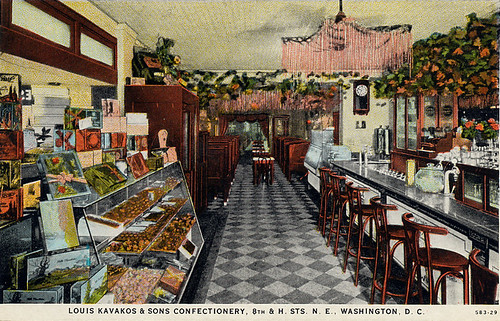H Street yet again

Starting in 1987, I lived in the H Street NE neighborhood of DC for about 17 years and while I had been interested in its issues (and cities generally) for a long time, it wasn't til about 1999/2000 that I decided to get involved, because I felt like the neighborhood's commercial district would continue to languish unless people like myself started trying to do something.
Because newspapers are "the first draft of history" I guess we can't always blame journalists for not doing a better story, because that's the fault, in part, of the editors, who are the ones who assign the approach for the story.
1. The basic problem with the story is that it just focuses on H Street, and doesn't acknowledge the existence of revitalization strategies generally, nor does it make comparisons to other commercial districts. That would help people place the story of the commercial district in context, and help them to better understand what's going on.
2. And the article, because it just focuses on this particular moment in time doesn't adequately express the reality that commercial district revitalization is a process, taking 20 years or more.
Ironically, the Washington Post syndicates, but for at least 10-15 years hasn't published in the local paper the columns of Neal Peirce, who writes on state and local issues. In 2003 I think, he wrote a column, "Main Street Niches In A Mass Sales World," that discusses the ebb and flow of the commercial district revitalization process, focusing on Plymouth, NH. From the article:
Successful Main Street programs, Rand notes, take years to mature -- four or five years to change attitudes and build initial confidence, five to 10 or more years for owners to start reinvesting seriously, 15 or 20 for the full recovery and new growth to take solid root.
3. Nightlife establishments are the first wave--they get people to resample a place and start to patronize it. This is the basis of my post "Richard's Rules for Restaurant-Driven Revitalization" which discusses this generally.
4. Retailers aren't going to open in a place until it's already successful, otherwise they are throwing their money away. Retail improves in a commercial district in stages, over long periods of time.
5. However, successful retail on H Street, especially boutique retail which is more likely to open in early stages of revitalization unlike chain retailers (except for American Apparel and maybe Design within Reach) who wait until a district is very much (re)proven, will always be a problem in the modern retail environment in Washington DC, because the building spaces are valued "too high" relative to their ability to generate sales/square foot.
(I have written about this extensively, see for example "More on commercial property tax assessment policies" which is probably the shortest piece and includes a letter to the editor that I did in response to a different Post article.)
Rents in successful and comparable "neighborhood" commercial districts in other mid-Atlantic center cities like South Street in Philadelphia, Hampden in Baltimore, or Carytown in Richmond are in the range of $20-$25/s.f., while on H Street--with fewer customers and less demonstrated success--asking prices for rents are in the mid $30s to the mid $40s/square foot.
6. Rents will only go up because of the streetcar--the city will raise property assessments and therefore taxes will go up and therefore rents--and because of the entry of chain stores like Giant Supermarket.
7. This does make boutique retailer driven renaissance less likely on H Street compared to South Street, Hampden, and Carytown.
We'll see what transpires over the next 5-10 years.
Labels: commercial district revitalization, commercial district revitalization planning, formula retail, property tax assessment methodologies, urban revitalization



0 Comments:
Post a Comment
<< Home